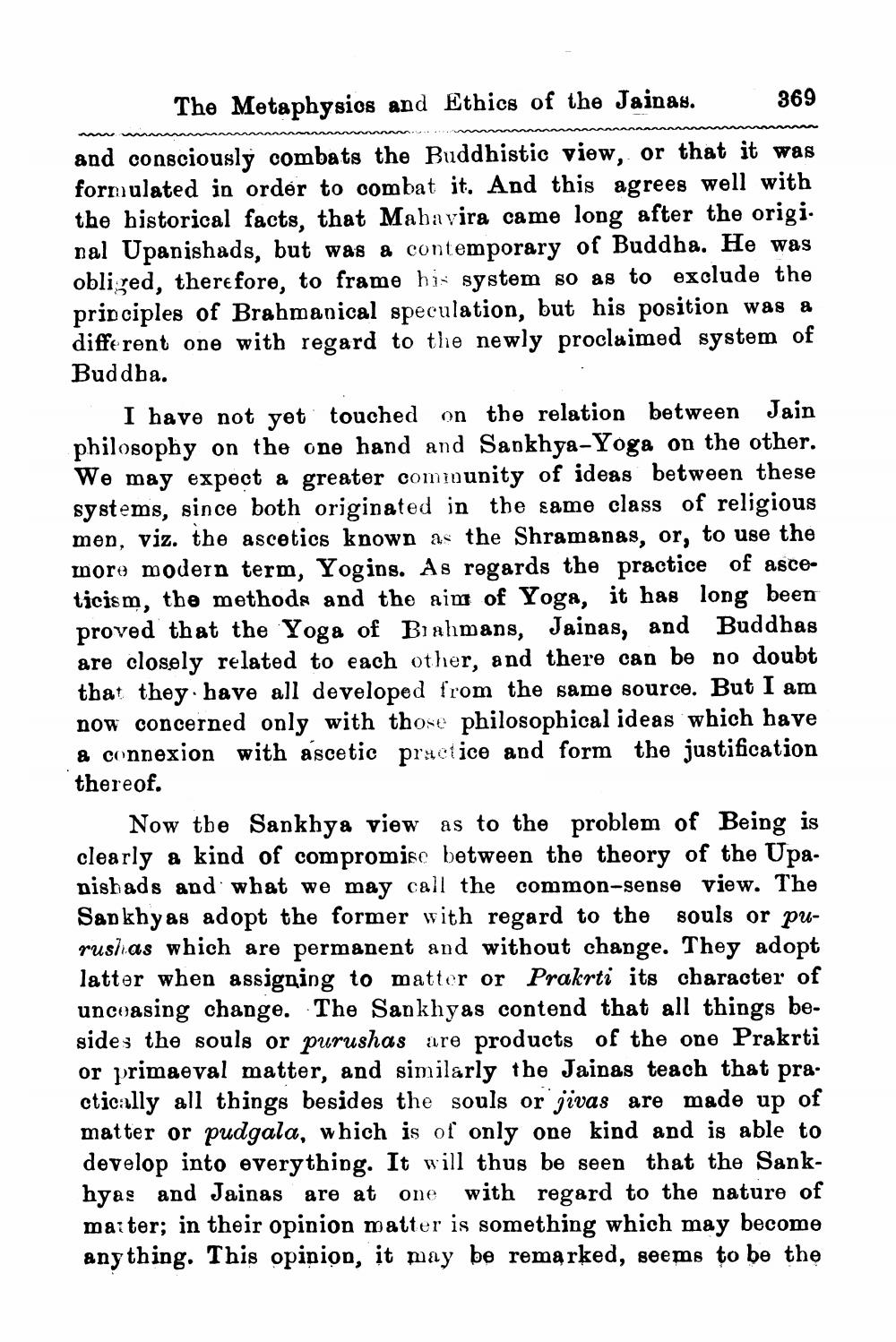________________
The Metaphysios and Ethics of the Jainas.
369
and consciously combats the Buddhistic view, or that it was formulated in order to combat it. And this agrees well with the historical facts, that Mahavira came long after the origi. nal Upanishads, but was a contemporary of Buddha. He was obliged, therefore, to frame his system so as to exclude the principles of Brahmanical speculation, but his position was a diffe rent one with regard to the newly proclaimed system of Buddha.
I have not yet touched on the relation between Jain philosophy on the one hand and Sankhya-Yoga on the other. We may expect a greater community of ideas between these systems, since both originated in the same class of religious men, viz. the ascetics known as the Shramanas, or, to use the more modern term, Yogins. As regards the practice of asceticism, the methods and the aim of Yoga, it has long been proved that the Yoga of Brahmans, Jainas, and Buddhas are closely related to each other, and there can be no doubt that they have all developed from the same source. But I am now concerned only with those philosophical ideas which have a connexion with ascetic practice and form the justification thereof.
Now the Sankhya view as to the problem of Being is clearly a kind of compromise between the theory of the Upa. nishads and what we may call the common sense view. The Sankhyas adopt the former with regard to the souls or purush.as which are permanent and without change. They adopt latter when assigning to matter or Prakrti its character of unceasing change. The Sankhyas contend that all things besides the souls or purushas are products of the one Prakrti or primaeval matter, and similarly the Jainas teach that practically all things besides the souls or jävas are made up of matter or pudgala, which is of only one kind and is able to develop into everything. It will thus be seen that the Sankhyas and Jainas are at one with regard to the nature of maiter; in their opinion matter is something which may become anything. This opinion, it may be remarked, seems to be the




